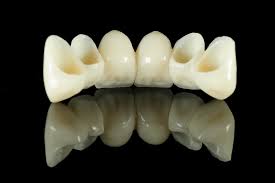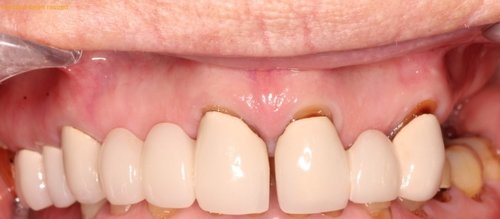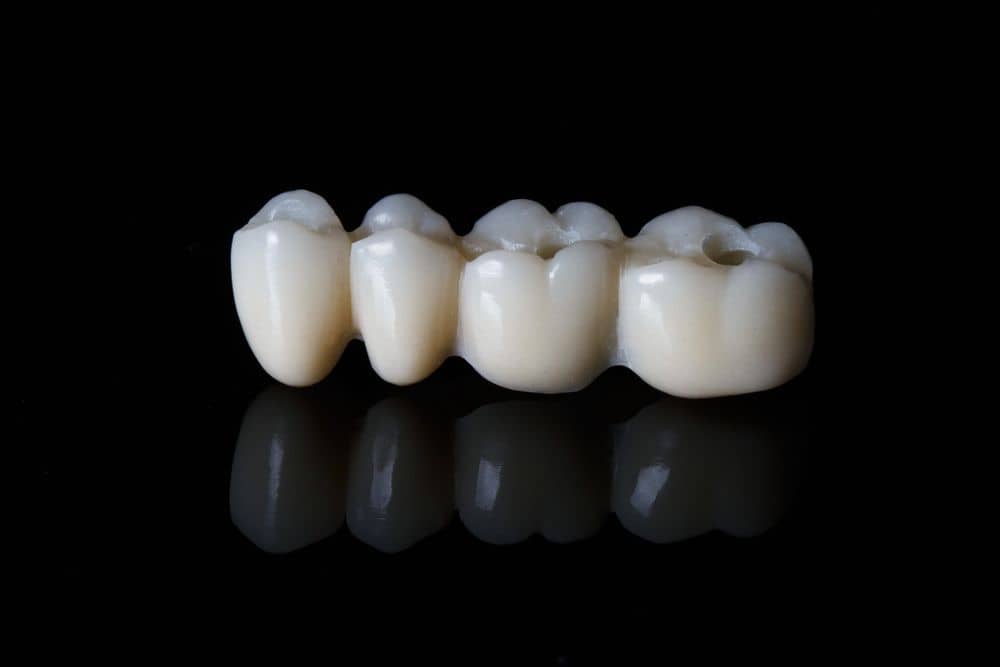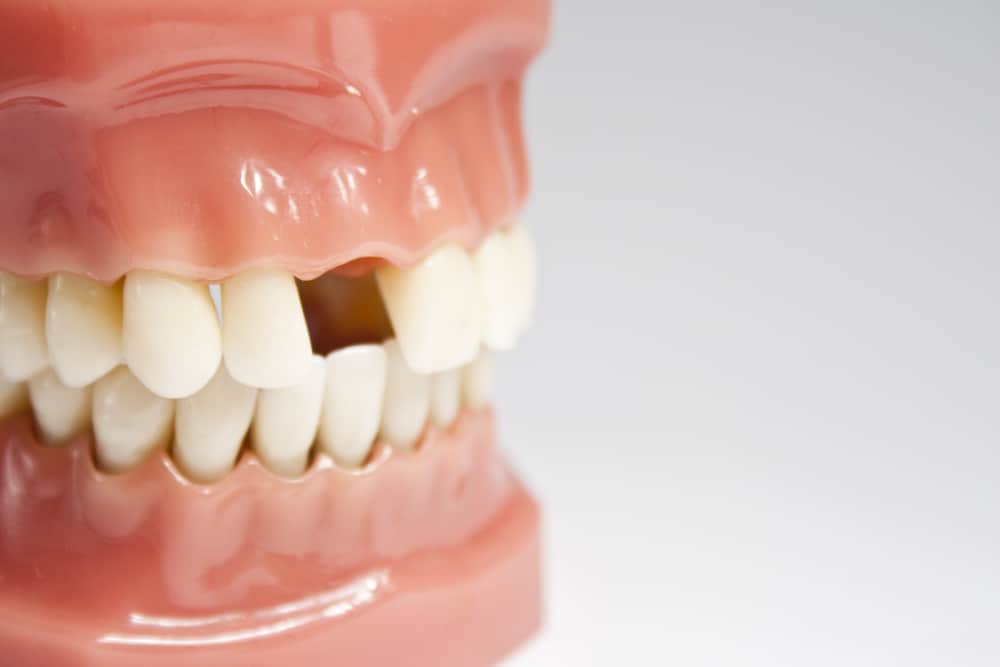Welcome to our complete guide on replacing front teeth with a dental bridge, designed to walk you through the entire process step-by-step. Losing front teeth can be a distressing experience, affecting not only your smile but also your ability to speak and eat comfortably. Fortunately, dental bridges offer a functional and aesthetic solution to this problem.

In this guide, we’ll delve into what dental bridges are, how they work, and why they might be the best option for restoring your front teeth. From understanding the initial consultation to exploring the final placement of the bridge, we cover all the necessary steps involved. Our aim is to equip you with the knowledge you need to make informed decisions about your dental health and help you regain your confidence with a smile that looks and feels great.
Whether you’re just starting to explore dental solutions or are on the verge of getting a bridge, this guide will provide you with valuable insights into each stage of the process, ensuring you know what to expect every step of the way. Let’s get started on your journey to a restored smile!
Contents
- 1 What are front dental bridges?
- 2 How do front dental bridges differ from other types of dental bridges?
- 3 Main reasons why individuals require front dental bridge?
- 4 What are different types of materials used in a front dental bridge?
- 5 How to choose the right material for front dental bridge?
- 6 Replacing your front teeth with a dental bridge: A Step-by-Step Guide
- 7 Cost Comparison of Front Dental Bridge to Other Restorative Options
- 8 FAQs
- 9 Is it better to get a dental implant or a bridge?
What are front dental bridges?
Dental bridges act like tiny engineering marvels to bridge the gap. They consist of a series of custom-made artificial teeth, often called pontics, anchored to the healthy teeth on either side of the missing one. These healthy teeth become the “pillars” of the bridge, hence the name.

The pontics, typically made from strong and natural-looking materials like porcelain, are designed to blend seamlessly with your existing teeth. Think of them as replacements that mimic the size, shape, and even color of your natural smile. This not only restores the aesthetics of your smile but also utilizes crowns, which are essentially caps placed over the healthy teeth, to provide a secure foundation for the bridge. The entire structure is then bonded together, creating a fixed restoration that feels natural and functions just like your original teeth.
How do front dental bridges differ from other types of dental bridges?
Front dental bridges focus heavily on aesthetics! Here’s how they differ from other bridges:
Natural-Looking Materials: Front bridges often use premium materials like porcelain or zirconia for a translucent, natural appearance that blends seamlessly with surrounding teeth. Back bridges, on the other hand, may prioritize strength and incorporate metal for durability.
Delicate Design for the Anterior Region: Front bridges typically replace one or a few missing teeth in the anterior (front) region of the mouth, where biting forces are less intense. This allows for a more delicate design compared to bridges for back teeth, which need to withstand greater chewing pressure.
Conservative Techniques: Since front teeth are highly visible, minimizing alterations to healthy teeth is a priority. Dentists may opt for conservative methods like Maryland bridges that require minimal preparation of the abutment teeth (supporting teeth). Back bridges may involve more extensive shaping of these teeth to accommodate the crowns.
Maintaining a Bright Smile: Due to their prominent location, maintaining good oral hygiene is crucial for the longevity and aesthetics of front dental bridges. Regular brushing, flossing, and dental checkups are key. While bridges for back teeth might be less susceptible to aesthetic concerns, proper cleaning remains essential for overall oral health.
Main reasons why individuals require front dental bridge?
Missing front teeth can significantly impact your life, affecting not only your appearance but also your oral health. Front dental bridges offer a reliable solution to these issues, restoring both aesthetics and function. Here are some key reasons to consider a front dental bridge:
Restore Confidence with a Complete Smile: Gaps in your front teeth can be a source of self-consciousness. Front bridges are designed to mimic natural teeth, seamlessly blending with your existing smile. This restoration can significantly boost your confidence and improve your social interactions.
Improved Chewing and Speech Function: Missing front teeth can make it difficult to chew food properly and may even slur your speech. Dental bridges restore the natural functionality of your front teeth, allowing you to chew effectively and speak clearly and confidently.
Prevent Teeth Shifting and Bite Problems: When a tooth is missing, the surrounding teeth tend to shift into the empty space to compensate. This can lead to misalignment and bite problems, potentially causing pain and discomfort. Front bridges prevent this shifting by filling the gap and keeping your remaining teeth in their proper positions.
Maintain Facial Structure: Front teeth play a crucial role in supporting the lips and cheeks. Missing front teeth can contribute to a sunken facial appearance. Dental bridges help maintain a youthful and balanced facial structure by providing support for these soft tissues.
Long-Term Oral Health Benefits: Restoring missing teeth with a dental bridge is not just about aesthetics. It also promotes long-term oral health by preventing issues like gum disease and jawbone deterioration.
What are different types of materials used in a front dental bridge?
The materials used in your front dental bridge significantly impact its overall look and functionality. The most common options are:
Porcelain
Aesthetics: The star of the show! Porcelain excels at mimicking the natural translucency and color of teeth, offering a highly aesthetic and natural-looking bridge.
Functionality: While strong enough for moderate chewing forces in the front of the mouth, porcelain may chip or break under excessive pressure.
Zirconia
Aesthetics: Zirconia offers a very natural appearance, often with a slightly higher translucency than porcelain. This can be particularly beneficial for mimicking the look of younger teeth.
Functionality: Zirconia is incredibly strong and durable, making it a great choice for both aesthetics and functionality, especially for patients who grind their teeth.
Porcelain-Fused-to-Metal (PFM)
Aesthetics: The metal core provides a strong foundation, but it can sometimes show through the porcelain, appearing less natural than all-ceramic options.
Functionality: PFM bridges are very strong and durable, making them a good choice for patients who require extra strength, particularly for replacing multiple missing teeth.
Composite Resin
Aesthetics: Less expensive than other options, composite resin can be matched to the color of existing teeth, but it may not achieve the same level of natural translucency as porcelain or zirconia.
Functionality: Composite resin is not as strong as other materials and may wear down over time, potentially requiring replacement sooner. It’s typically used for smaller gaps or temporary bridges.
How to choose the right material for front dental bridge?
The best material for your front dental bridge depends on your individual needs and priorities. Here are some key factors to consider:
Desired Aesthetics: If a natural, flawless look is paramount, porcelain or zirconia are excellent choices.
Strength and Durability: If you require extra strength or grind your teeth, zirconia or PFM might be better suited.
Budget: Composite resin is the most affordable option, but it may not be the most long-lasting.
Replacing your front teeth with a dental bridge: A Step-by-Step Guide
Here are the following steps for replacing the front teeth with a dental bridge:
1. Consultation and Planning (Initial Appointment)
Understanding Your Needs: Your dental journey begins with a comprehensive consultation. Our dental expert Dr. Kirti Parashar will discuss your concerns, desired outcomes, and overall oral health.
Oral Examination and X-Rays: A thorough examination of your teeth and gums is conducted, often including X-rays, to assess the health of surrounding teeth and jawbone. This information helps determine the best bridge design and ensures its suitability for your unique situation.
2. Preparing the Abutment Teeth (Preparation Appointment)
Creating Space for the Bridge: The teeth flanking the gap (abutment teeth) are slightly reshaped using local anesthesia for comfort. This creates space for the crowns that will anchor the bridge.
3. Temporary Bridge Placement (Preparation Appointment)
Temporary Smile: Following the reshaping, your dentist takes precise impressions of your teeth to create a temporary bridge. This temporary bridge serves two important functions:
a) Protecting the prepared abutment teeth while the permanent bridge is being crafted, and
b) Allowing you to experience the look and feel of a bridge before the final placement.
4. Permanent Bridge Placement (Second Appointment)
The Final Touch: Once the permanent bridge, typically fabricated in a dental lab using high-quality materials, is ready (usually within a few weeks), your dentist will remove the temporary bridge.
Ensuring a Perfect Fit: The permanent bridge is meticulously checked for fit, color, and overall aesthetics to ensure it seamlessly blends with your existing teeth.
Cementing the Bridge: Finally, the permanent bridge is securely bonded onto the prepared abutment teeth, restoring your complete smile.
5. Recovery and Follow-Up Care
Minor Sensitivity: You may experience some temporary sensitivity after the procedure. Your dentist will provide you with detailed post-operative instructions to ensure optimal healing and bridge longevity.
Maintaining a Healthy Smile: Regular brushing, flossing, and attending scheduled dental checkups are crucial for maintaining good oral hygiene and prolonging the lifespan of your dental bridge.
Cost Comparison of Front Dental Bridge to Other Restorative Options
Choosing the best way to restore your missing front teeth involves balancing cost and functionality. The table below describe the popular options, highlighting their advantages, disadvantages, and estimated cost range:
| Restorative Option | Pros | Cons | Cost Range (per tooth) | Cost Range (per tooth in INR) |
| Front Dental Bridge | – Natural appearance & restored function – Improves chewing and speech – Relatively quick procedure | – Requires altering healthy teeth – May need replacement over time | $3,000 – $7,500+ | ₹3,000 – ₹15,000+ |
| Dental Implant | – Most permanent solution – Promotes jawbone health – Feels and functions like natural teeth | – Higher upfront cost – Requires minor surgery – May not be suitable for everyone | $3,000 – $7,000+ | ₹10,000 – ₹40,000+ |
| Partial Dentures | – Most affordable option – Easy to remove and clean | – Less stable and comfortable than bridges/implants – May affect speech and chewing – May not look as natural | $500 – $3,000+ | ₹1,000 – ₹10,000+ |
FAQs
Is a dental bridge a good procedure for front teeth?
Fixed partial dentures, also known as dental bridges, are a viable solution for restoring missing front teeth, including incisors and canines. They offer favorable aesthetics by mimicking natural teeth. Additionally, bridges enhance chewing function and speech clarity.
The procedure is less invasive compared to implants. However, it requires the preparation of adjacent healthy teeth (abutment teeth) for crown placement. Bridges may need replacement in the long term. Consulting a dentist is crucial to determine if a bridge is the most suitable option for your specific situation.
How many front teeth can be on a dental bridge?
Dental bridges are a well-established solution for restoring front teeth (incisors/canines). However, the number of teeth replaced significantly impacts outcomes. Studies suggest that replacing 1-3 missing teeth is ideal for optimal aesthetics, function, and minimizing stress on the surrounding teeth supporting the bridge (abutment teeth).
Exceeding this range for frontal restorations is discouraged due to increased leverage on abutment teeth, bulkier aesthetics, and hygiene challenges. If you have more than three missing front teeth, consult a dentist about alternative solutions like multiple bridges, implants, or partial dentures.
How long do front teeth bridges last?
The longevity of anterior dental bridges (replacing front teeth) varies depending on several factors. Scientific literature suggests a lifespan of 5 to 15 years with proper care. Factors influencing this include:
Oral Hygiene Practices: Meticulous brushing and flossing are crucial to prevent dental caries and gum disease around the bridge and abutment teeth.
Material Quality: The type of materials used in the bridge framework and crowns impacts durability. Porcelain fused to metal (PFM) bridges are generally considered long-lasting.
Placement Technique: Proper bonding procedures ensure a strong connection between the bridge and abutment teeth, reducing the risk of loosening or debonding.
Occlusal Load: The amount of biting force placed on the bridge, with front teeth bridges typically experiencing less stress compared to those in the back.
Is it better to get a dental implant or a bridge?
Choosing between a dental implant and a bridge depends on several factors, and there’s no single “better” option. Here are some deciding factors described:
Dental Implants:
The All-Star: Implants are the gold standard for replacing teeth. They function and feel most like natural teeth, promote jawbone health, and can replace single or multiple teeth independently.
The Downside: Implants come with a higher upfront cost and require minor surgery. Additionally, not everyone qualifies due to jawbone health or medical conditions.
Dental Bridges:
The Budget-Friendly Option: Bridges are generally more affordable and require a quicker procedure. They’re a good choice for replacing 1-3 missing teeth.
The Catch: Bridges require altering healthy teeth to support the bridge, and they may need replacement over time. They might not feel quite as natural as implants functionally.
Can you replace front teeth with a bridge?
Yes, dental bridges are a great option for replacing missing front teeth! They offer several benefits:
Natural Look: Bridges are crafted to closely resemble your natural teeth, restoring a confident smile.
Improved Function: They restore chewing and speaking abilities affected by missing teeth.
Relatively Quick Procedure: Compared to implants, bridges require a less invasive procedure.






